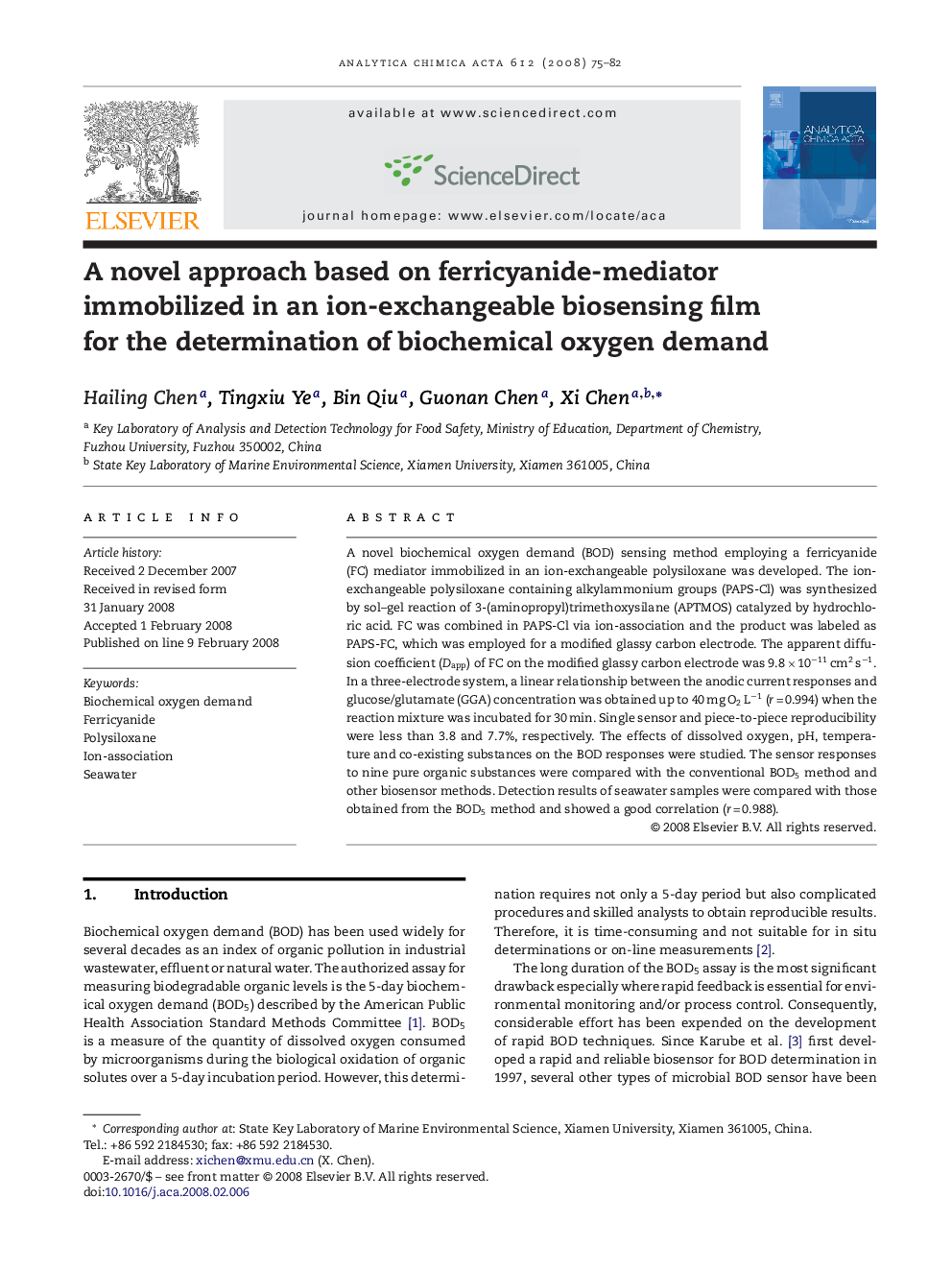| کد مقاله | کد نشریه | سال انتشار | مقاله انگلیسی | نسخه تمام متن |
|---|---|---|---|---|
| 1169685 | 960646 | 2008 | 8 صفحه PDF | دانلود رایگان |

A novel biochemical oxygen demand (BOD) sensing method employing a ferricyanide (FC) mediator immobilized in an ion-exchangeable polysiloxane was developed. The ion-exchangeable polysiloxane containing alkylammonium groups (PAPS-Cl) was synthesized by sol–gel reaction of 3-(aminopropyl)trimethoxysilane (APTMOS) catalyzed by hydrochloric acid. FC was combined in PAPS-Cl via ion-association and the product was labeled as PAPS-FC, which was employed for a modified glassy carbon electrode. The apparent diffusion coefficient (Dapp) of FC on the modified glassy carbon electrode was 9.8 × 10−11 cm2 s−1. In a three-electrode system, a linear relationship between the anodic current responses and glucose/glutamate (GGA) concentration was obtained up to 40 mg O2 L−1 (r = 0.994) when the reaction mixture was incubated for 30 min. Single sensor and piece-to-piece reproducibility were less than 3.8 and 7.7%, respectively. The effects of dissolved oxygen, pH, temperature and co-existing substances on the BOD responses were studied. The sensor responses to nine pure organic substances were compared with the conventional BOD5 method and other biosensor methods. Detection results of seawater samples were compared with those obtained from the BOD5 method and showed a good correlation (r = 0.988).
Journal: Analytica Chimica Acta - Volume 612, Issue 1, 31 March 2008, Pages 75–82